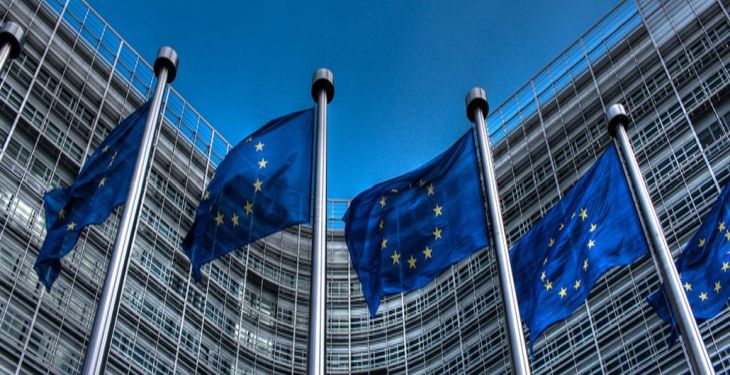Romania intends to push “price and accessibility” of energy as the guiding principles of its EU Presidency next year – whether it relates to the EU’s 2050 climate goals, the expansion of nuclear power, new gas pipeline projects, or even coal.
Romania will take the EU mantle from Austria for six months on 1 January, in a political environment constrained by Brexit and the May 2019 European elections.
“It will be a challenge, because it’s a very short time that we have at our disposal,” said a diplomatic source who briefed reporters in Brussels on Thursday (25 October).
Romania will only have three months to close legislative files before the European Parliament goes into recess for the May European election, according to Euractiv.com.
“So there will be competition for time, in whatever we do,” the source explained, underlining that Britain’s exit from the European Union, expected on 29 March, “will compete for political attention” and add “political unpredictability” to Romania’s EU Presidency.
But that does not mean Bucharest has no ambition for its six-month stint at the EU’s helm.
“In general, climate change will feature quite high on our agenda. And specifically decarbonisation of transport,” the diplomat said, citing a proposed EU bill to reduce CO2 emissions from trucks, the Eurovignette directive for charging heavy-duty vehicles, as well as new tyre labelling rules.
The international climate agenda will feature prominently in the background. In November, the European Commission will present its low-carbon strategy for 2050, kicking off a year-long consultation process with EU member states, industry associations, and other interested parties that will conclude around end 2019.
Discussions there will centre on potential pathways to reduce emissions to net-zero by 2050, in line with the Paris Agreement on climate change. And Romania wants to “make sure everybody is represented in this discussion”.
All formats of the EU Council of Ministers will be asked to contribute, the diplomat said – including ministers in charge of the environment, the economy, competitiveness, transport, and even education. Consultations will also involve industries, the EU source said, among which the nuclear power sector.
This is where things get interesting.
“We are very much in favour of nuclear as a low-carbon energy source,” the diplomat said, noting that Romania currently has one of Europe’s lowest installed nuclear capacity.
Bucharest has plans to expand nuclear generation as part of a draft energy strategy, the source added. Nothing is agreed yet, however: “If it happens, it will be in the second part of the next decade”.
Bucharest also has its eyes firmly set on developing new gas resources. The country hopes to become “100% independent soon” thanks to the Bulgaria-Romania-Hungary-Austria (BRUA) pipeline under the Black Sea.
Construction started in June this year, with help from a Commission grant of €180 million and further loans from the European Investment Bank (€50 million) and the European Bank for Reconstruction and Development (€60 million).
Renewables have “a bad image” in Romania
Of course, renewable energies have taken more space. Romania has plenty of installed wind and solar capacity, with renewables reaching between 30% and 40% of electricity production depending on the day, the diplomat said.
But the “two drivers” of the country’s energy policy are “price and accessibility,” he stressed, saying this is the main reason why renewables currently have “a bad image” in Romania.
Bucharest gave “generous subsidies” to wind power at the end of the 2000s, which were passed on to consumer energy bills. “So now, even though the technology has evolved and the prices have come down, there is still a negative public perception of renewables,” the diplomat said.
This is why gas has climbed up the country’s energy agenda, the diplomat explained: the need to diversify sources and routes of supply has become a central concern for the Romanian government. And also because security of supply “is very much psychological,” he said.
“It’s not that we are coal lovers. But it’s there.”
The same goes for coal. “It’s not that we are coal lovers. But it’s there. And it’s affordable,” he said recalling that winter supply cuts in Romania were a recurrent problem in communist times, and are still vivid in the nation’s collective memory.
Affordability and security of supply are the main reasons why Romania is “thinking about new investments in coal,” the diplomat said – although a formal decision has yet to be made and any new coal power stations would need to be equipped with carbon capture and sequestration (CCS) technology to mitigate CO2 emissions, he cautioned.
EU “has to be followed” on climate change
In fact, energy policy and CO2 reductions in general is an area where Romania believes the EU could be less dogmatic.
“At some point, if we’re really serious about climate, commitments from big emitters should be synchronised,” he said.
The EU already has a leadership position on climate change “but it has to be followed, it has to be matched,” the diplomat insisted, saying the question is how to engage big emitters like China, India and others in taking more resolute action on climate change.
“We don’t think that it is useful for the EU to constantly increase its commitments,” the diplomat said, echoing warnings by German Chancellor Angela Merkel, who spoke out in August against increasing the EU’s greenhouse gas reduction targets.
“Otherwise, even if we increase our commitments by 100% or 200%, it won’t mean anything for the climate if other big emitters don’t match this at some point.”
